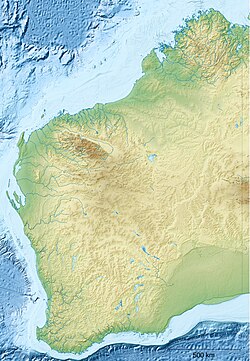| Gordon | |
|---|---|
Location of the river mouth in Western Australia | |
| Etymology | George Hamilton Gordon, the 4th Earl of Aberdeen [1] |
| Location | |
| Country | Australia |
| State | Western Australia |
| Region | Great Southern |
| Physical characteristics | |
| Source | Three Wells |
| • location | near Broomehill |
| • elevation | 344 m (1,129 ft) |
| Mouth | confluence with the Frankland River |
• location | north of Frankland River (town) |
• coordinates | 34°12′35″S117°0′2″E / 34.20972°S 117.00056°E |
• elevation | 207 m (679 ft) |
| Length | 121 km (75 mi) |
| Basin size | 4,652 km2 (1,796 sq mi) |
| Basin features | |
| River system | Frankland River |
| [2] [3] | |
The Gordon River is a river in the Great Southern region of Western Australia.
